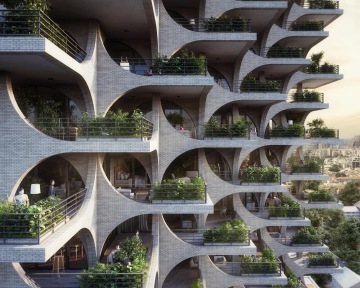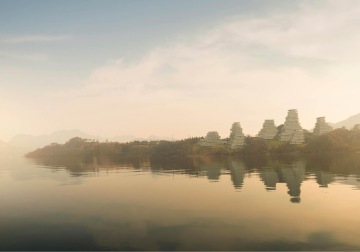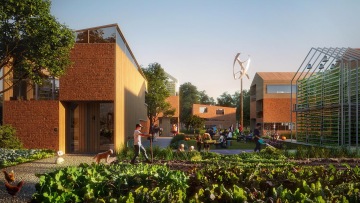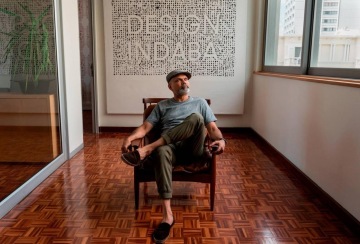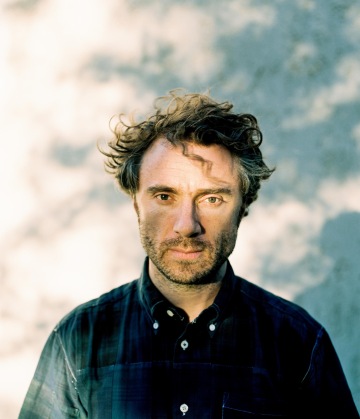
Designing on a Human Scale with Thomas Heatherwick
Thomas Heatherwick’s holistic approach brings a thoughtful dimension to architecture, design and urban spaces. Listen to the acclaimed designer along with ArchDaily editor, Christele Harrouk, as they explore how he approaches projects by considering them from a human scale.
reSITE is excited to release the first episode of Design and the City "Designing on a Human Scale with Thomas Heatherwick" featuring guest host, Christele Harrouk of ArchDaily. Listen on Anchor, Spotify, Apple, Google Play or wherever you get your podcasts.
Listen to Thomas Heatherwick on Design and the City now:
For Thomas Heatherwick, architecture and urban design go hand-in-hand. The way he sees it, these aspects of city-making are not mutually exclusive. They’re linked. Like with all of his projects, he strives to consider them from a human scale, capturing the essence of what already exists. And somehow, he still manages to achieve one of his pillars of placemaking - creating something that doesn’t feel like somewhere else, somewhere else we’ve already been.
Heatherwick is known for a handful of prolific buildings across the globe, like the Zeitz MOCAA in Cape Town, revived Coal Drop Yards in London, and the much-discussed Hudson Yards Vessel in New York City.
I think myself, and my team, we don't see a distinction between architecture and urban design. The same verb applies—you design. You don't architect something, you design it.
Heatherwick also announced his latest project, to be built in the heart of historic Prague, Nové Mesto’s Savarin complex. The project will use a number of heritage buildings creating connections through a major new and dynamic public space. We caught up with Thomas at reSITE to discuss more about the projects that fit right into this years theme, REGENERATE.
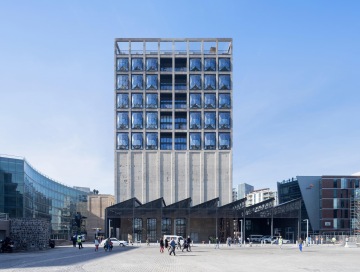
Thomas Heatherwick: My name is Thomas Heatherwick. I'm based in London, and have a studio that’s been going for over two decades. There are 220 of us with an incredible mix of people of many different specialisms but what our focus is, is designing buildings and spaces and pieces of city.
There is a particular emphasis on the human perspective on all the projects that we are working on. We are trying to not let architectural dogma drive us or pure high-level theory, but drive-by the on-the-ground user experience. It is trying to counter this move towards sterility that has been happening in cities, creeping and then racing towards that over the last more than half a century. So it feels like there's a big job to do, to try and make places mean something to people.
reSITE: Heatherwick is a Londoner through and through, so we asked him about his take on the city, and where he sees its biggest challenges.
Heatherwick: I think London is a phenomenal city. I'm utterly biased because I was born there, and I live there, and my studio is there. The phenomenallness is based on a city that is centuries and centuries-old, however, if you go and find the parts that are new, where whole chunks are new, there is absolutely what I'm talking about within the greater London.
It's as you go outwards from that center that the sadness of insensitive development happens.
I think that's our challenge. It's often that the old town and the center has a human quality and humanity in it, and also that’s where new elements are more sensitively integrated into it. It's as you go outwards from that center that the sadness of insensitive development happens. It’s a huge question of how you make large amounts of housing and all the things that are needed around that while making something that isn't soulless and has its own personality and really feels it has the human dimensions that will nourish our lives.
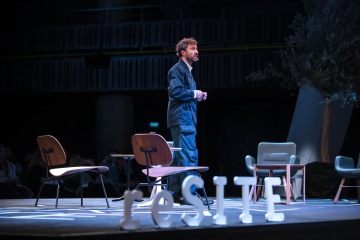
reSITE: Before we dive into today’s discussion, we asked Thomas about his experience at reSITE and speaking on our 360-degree stage.
Heatherwick: There's an energy in the room and a focus that is exciting to speak to, and absolute engagement by everyone, and that's all special, and being here in Prague, where there’s such a collection of some of the best buildings ever made. It's interesting to talk about the subject of regeneration in this context.
reSITE:This year at reSITE we tackled urban regeneration and what that could mean for our cities. Some of Heatherwick Studio’s most prolific projects, as discussed earlier, have also been regeneration projects. And part of what makes each of them so intriguing is what he was able to create out of those spaces. We asked Thomas about what comes to mind when he hears the word regenerate.
Heatherwick: The word regenerate has been used so much that I actually have a bit of a dead feeling inside me. I've just put it aside to some extent and just think about my love for urban places that people connect with. Whether that's working with existing older infrastructure and building elements and adding newer elements and creating space within that, or creating new pieces of city where there’s little left to work from. The word regenerate, it's been used so much over such a period of time that I am aware it needs unpacking. If it's regenerate, what generated to start off with, and are you redoing something that existed already. I'm not sure I feel that’s all that matters is going forward where you are now, so the ‘re’ bit isn't my focus. What we do is based on now.
The word regenerate, it's been used so much over such a period of time that I am aware it needs unpacking.
You know when satellite navigation systems came out it was astonishing to have that device. You'll be in a car, you'd be going along and you’d set your destination and that lovely voice would say “turn left at the next street” and you wouldn't turn left at the next street. The voice didn't get angry with you - a bit of life philosophy—you’d go past it and it doesn't say “you didn't go left, why didn't you go left?” Instead, it just recalculates, and it just says: “take a U-turn at the next thing, or turn left at the next thing, and continue to there”. So in a sense, each situation as a studio we find ourselves in, we are just looking forward. We are trying not to regret what we can't change. And that’s satellite navigation - you can’t change that you have driven past: you didn't obey it, you didn't do it.
There are so many things to you could regret from the last half a century or so of some terrible city-making decisions where people have focused on the roads, not the people. It got into their head that is many types of historic building were somehow blocking the creation of this idealistic infrastructure and didn't see that was a possibility to do both. So we're just starting from what we have, and just positively trying to move forward and bring together existing elements and new possibilities. So I suppose I'm really interested in the ‘generate’ and ‘invent’ parts. The “re” implies a sort of sadness and I don't think it's worth wasting time being sad. The hope and enthusiasm and possibility is what drives us as a team.
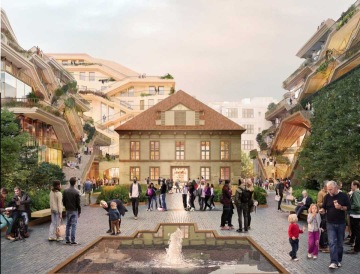
reSITE: The idea of regeneration goes beyond city-making. Cities are made by people, and people need to regenerate themselves—their minds, their bodies, and beyond. We asked Thomas how he you personally regenerates and what kind of activities he does to restore that sort of vivid energy and mindfulness he has.
Heatherwick: I suppose I feel that this cliché that people talk about, this work-life balance, I find this funny notion because the implication is that there's a balance between something that's damaging you and something you need to balance it with with some restorative dimension. I am very fortunate to work on such a huge range of things with my team and get to, within that, travel, and intellectually be stimulated and challenged in so many different ways. That's one of the greatest blessings or healings of what we do. So, I don't see a line between domestic bliss and working drudgery, personally. I can't speak for my team, but I've constructed a life that's stitches as many facets all together into one amalgamation in some way.
It feels like there's a big job to do, to try and make places mean something to people.
I sort of think that the exciting thing is that in city making now, the cities have started to realize that the idea that you had this big ghetto of residential and a big ghetto of work, and you travel between work and living. That, that wasn't actually making healthy pieces of city or healthy lives. The integration of those things together, so true mixed-use multi-layered developments is something that is more likely to make places alive and thriving by day, and by night. I feel it's the same for me and my life, that by stitching all of those together somehow that is what nourishes me.
reSITE: Joining us as a guest host today is Archdaily’s Christele Harrouk. Christele dove deeper into the ethos behind Thomas’s holistic approach to space, thinking on a human scale, and what it means to innovate.
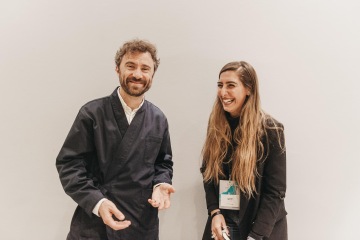
ArchDaily: Bringing architecture and urban planning, or urban design—call it whatever you want - together, how do you achieve this? Why do you think this is so important nowadays? What do you think a successful project is? Is it a combination of both? How is your creative process? How are you dealing directly with these two aspects? For example, when you're at university you learn either this or this, but in your work, it is like both of them together. They are interlinked, so what can you tell me about this?
Heatherwick: I think myself, and my team, we don't see a distinction between architecture and urban design. The same verb applies—you design. You don't architect something, you design it. We try to start by analyzing what are the problems and try to find the issues that feel like the opportunities in the piece of city. I think no longer, and it's the same for us actually, no longer are we thinking of buildings as objects so simplistically. We see every building project as an opportunity for urban improvements or urban enrichment or engagement in some way and so it's not a thing that suddenly kicks into a different mindset.
It's an opportunity to somehow connect with people, provoke, provide interest and in the dumbest way, just try and be an antidote to the blandness and soullessness that is creeping very fast into most major new development pieces of cities.
The connection to the street, because that's where most people are.
So, it feels quite an urgent thing to be thinking about but our focus is maybe, in answering your question more clearly, our focus is much more at the bottom of buildings than at the top. I think the tops of buildings have been overrated for so long, and London has been arguing and debating about tall towers far too much because it's an easy thing to talk about. Whereas the hard thing to talk about is what impact a building has on the street, and how wide it is and whether you're walking past a dead lobby with an artwork behind the reception desk for many seconds of your walking along a street, or whether you're walking past five different, engaging, diverse, changing things that enrich your life. Walking past a dead office lobby with a reception desk and a token big piece of art in the background doesn't give anything really to the street. It might look polished, but it does it really engage people.
The connection to the street, because that's where most people are. We are trying to focus our effort on people where are the people and what are the issues that matter most to them and have a dialogue with that.
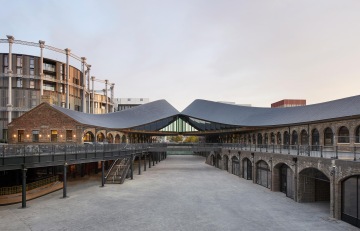
I think there's been a real gap. My passion in setting up the studio, I've always only been interested in gaps. I haven't felt that the job of the studio is to express ourselves. It's problem-solving and the big problem for me seems to be why are new pieces of city so soulless and monotonous? And that’s led to a very human-focused design direction, because it felt that many of those places were generated by forces that were very cerebrally lead, rather than emotionally lead.
It felt that many of those places were generated by forces that were very cerebrally lead, rather than emotionally lead.
It felt like there was a gap in a way of thinking and I suppose if we've been commissioned to do more things it's possibly because the digital revolution has meant that that thing that I was feeling like a funny little teenager going around the world—I wasn't going all the way around the world, by the way, just going around my world - there was a point to that.
I'm always interested in the response actually have children and teenagers because there is a truth to the perceptions you have, and often you speak to many people, and their career is defined by observations and analysis they made when they were young, very young. I sort of hold to that. I’ve tried to stay [true] to that while becoming educated, having multiple degrees and honorary thingies from architectural institutes or whatever.
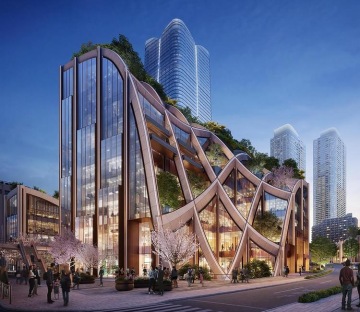
I’ve tried to stay true to some basic analysis of the utter need for more human-driven, human-centric, street-focused diversity and placemaking. If that’s lead to projects, I hope it's for that reason. I doubt it's because of my colleague’s orange hair or me having funny facial hair or silly name. I hope it's because our commitment and enthusiasm are very sincere. It's very hard, I mean, the lessons I learnt while studying moved from an initial, and in a way, indignant...I was quite indignant: ‘Why do people do that? How do people build that? Who does that?’ And then as I learnt more I realized how phenomenally hard it is.
The job of the building designer is challenged in the financial restrictions, the regulatory restrictions and permissions, the communication dimension, and the creation of huge amounts of drawings, just general management. All those things conspire to make it hard to build anything at all, to make something at all, and then make it also be special is phenomenally difficult.
I think the things that we need to cherish anyone who's making places that are whole-hearted.
I think the thing is that we need to cherish anyone who's making places that are whole-hearted, I try to not judge on my taste and have a taste in a way. My taste is people doing things wholeheartedly.
So often the process wears designers down and I've been very lucky to overtime have a team of fantastic collaborators who are very determined. There's no illusion in our team that there is any genius move, ever. We just keep going and keep going and don't give up and have an ongoing enthusiasm that is energy and we know if we lose that, the second we lose that enthusiasm and real belief, or if we become hardened, we will lose it and we should shut the studio the very next day.
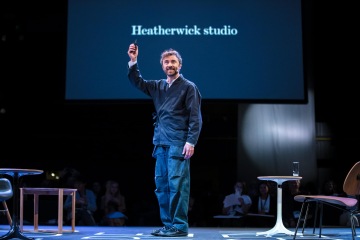
ArchDaily: So basically you think that coming back to the human, and to people, this is the essence of the times?
Heatherwick: It’s an essence of the need, but it's really important to think about how you are going to think about that. What that need is? There isn't a simple answer. And that's what makes it so exciting but also complex and difficult.
It's important to say that the commissioners are part of your design team because they might be a particular expert on their subjects. Here in Prague, we’re working with Crestyl and they are absolute experts in the topology of the project that we're doing, and they’re part of our design team. We might get all the credit, but there are so many people, including the heritage body who we've been having some quite rich conversations with, that are informing and improving our design work, so it's just ongoing, ongoing, drive and drive, and pulling together that sometimes, eventually, actually turns into a real project that happens and hopefully can mean something to people.
That's our passion. That’s why my team, I think, work with me and together we strive to do something that will be particular to a place rather than imposing a style on a place.
We often forget that emotion is a function. So that was a critical part of the functionality we needed to be perceiving.
ArchDaily: But with most of your projects, there's always this question—is it a project or is it art? Why isn't that both in that case, anyway. It has a character, let’s say, and it's also giving back to the city or it’s [making] and impact or solving a problem, wouldn’t you say?
Heatherwick: Well it seems that we’ve viewed function in the past, I think, quite two-dimensionally, so functionalism led to some of the most dysfunctional places. We often forget that emotion is a function. So that was a critical part of the functionality we needed to be perceiving and I think, in a way, just gently trying to bring that back into the factors that will constitute truly functional design.
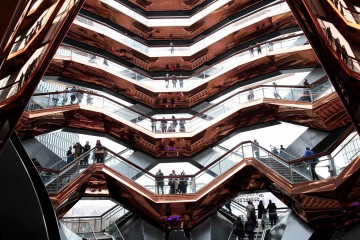
ArchDaily: And the last, the topic of the month is innovation, and obviously, when we think about innovation, we think about your projects. Is your innovation in the technology and materials you are using or is it in the design itself in your projects?
Heatherwick: I suppose innovation is something that has no scale. Pieces of city or larger building development projects start with the most strategic thinking, but they still will all end up with a door handle and a flaw and with door toilets and all of these elements. What I’ve always been struck by, is that trying to have the mental elasticity to be able to move between the micro and the macro, and move between the two. I’ve always found it quite funny that there would be organizations that would just do master plans, or just use the smaller things and find the two inform each other.
It’s dangerous to think of a masterplan without then thinking of the specifics as well. The master plan means nothing if the elements and the ingredients within that don’t connect with the human because the human walking around is connecting to the immediate things that are there. So I think both matter and both need to work closely together.
Innovation is a funny word—it's ideas. It's just we humans connect with ideas, and ideas have no scale.
Innovation is a funny word - it's ideas. It's just we humans connect with ideas, and ideas have no scale. Why shouldn't there be ideas at the smaller and the larger scale? I think it's just trying to find the functional reasons that can drive them.
An idea can be for a way of making something more affordably or to use a local materials so something doesn't have to be transported so far or, it could be an idea for how something might make you feel, or how something might look or touch you, or how all these different factors might create a function that you might or one person may perceive as beautiful.
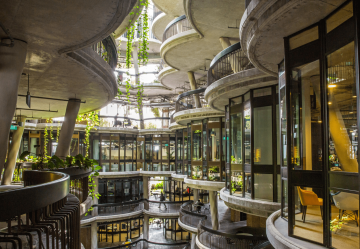
So I suppose we’re trying to stay alert and stay alive, and keep a vitality about finding the ideas and working diligently to embed them because you can tell when a project hasn't actually got love in the detail so a masterplan means nothing unless there are some real care and personality - you pick friends because of the personality.
So the generic quality that creeps into buildings through all the different forces that aren't just the designers, there are so many factors, means that the designer of buildings and pieces of city has to be a campaigner. You have to be campaigning all the time for the human experience because that will drive the innovations in the technology to be performing technologically, but also delivering a human factor at the same time. We are always trying to make every element do as much as possible.
That was Thomas Heatherwick, Founder and Director of Heatherwick Studios, as well as guest host, Christele Harrouk of Archdaily.
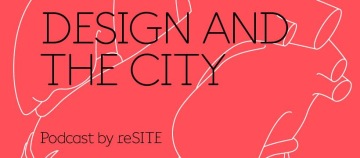
Design and the City is brought to you by reSITE, the global non-profit acting to improve the urban environment and organized as part of the project Shared Cities: Creative Momentum. This podcast is produced by Radka Ondrackova, Matej Kostruh, Adriana Bielkova, Gil Cienfuegos and Polina Riabukha. It is directed and hosted by Alexandra Siebenthal, and recorded and edited by LittleBig Studio.
Listen to more from Design and the City
A New Generation of Architects with Chris Precht
Chris Precht’s aim to reconnect our lives to our food production by bringing it back into our cities and our minds can be found throughout his architecture. Listen as he discusses the importance of authenticity, creating spaces that activate our senses, and looking at our objective reality to solve the problems of our time.
Creating Emotional Connections to Nature with Yosuke Hayano
Yosuke Hayano, principal partner for MAD Architects examined how the studio approaches every project with a vision to create a journey for people to connect with nature through architecture. Listen as he draws on specific projects that embody that connection on a macro and micro level. Photo courtesy of MAD Architects
Human-Centered Smart Cities with Marianthi Tatari
Associate Director and Senior Architect at UNStudio, Marianthi Tatari, dissects different aspects of city-making that threaten the quality of life such as mono-functional spaces and commoditized smart cities and how to approach designing them with optimism. Photo courtesy of UNStudio
Giving Design a Higher Purpose with Ravi Naidoo
Ravi Naidoo, the driving force behind Design Indaba, arguably the most influential design event in the world. The event takes place annually in Cape Town is only the tip of the iceberg. Listen as he pushes the boundaries of the purpose design holds with the simple question—what is design for? Photo courtesy of Design Indaba
